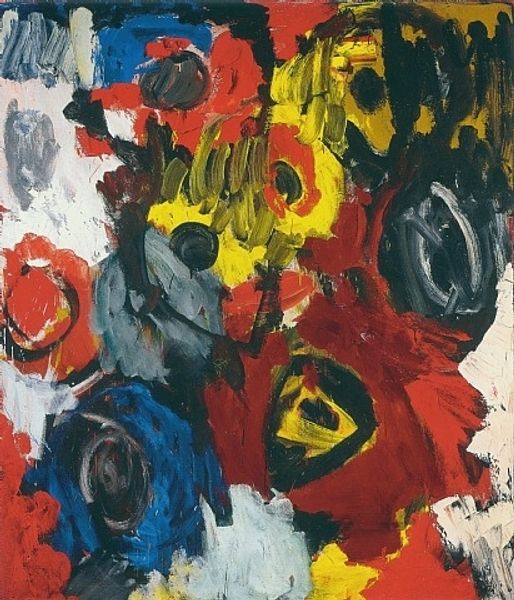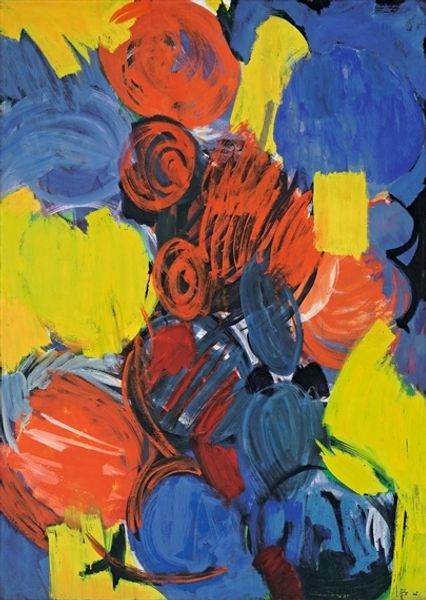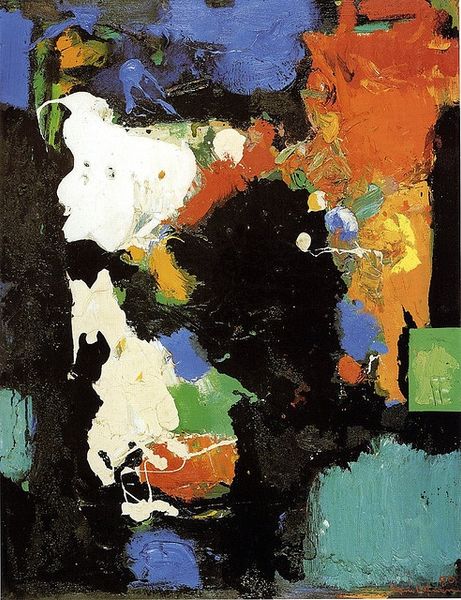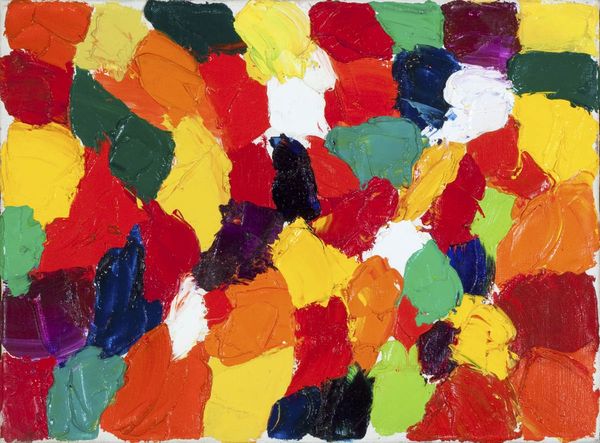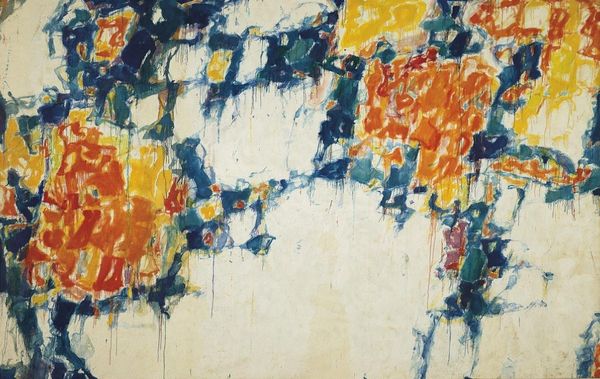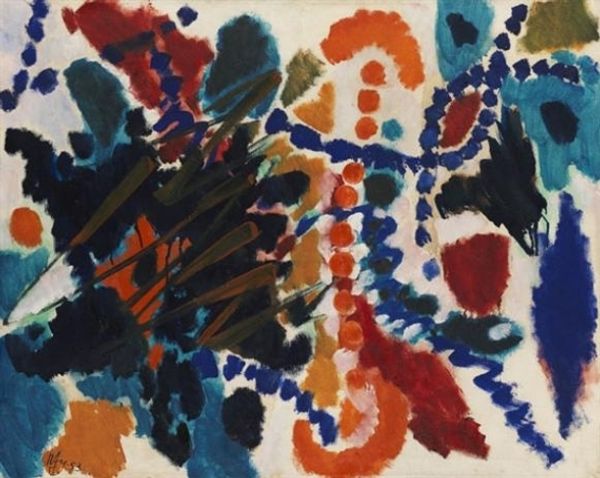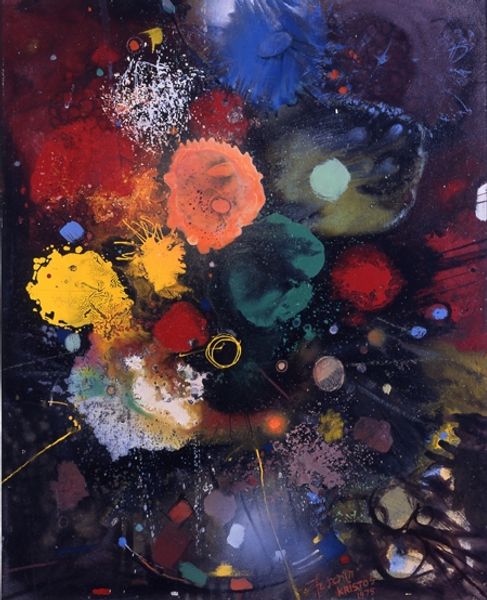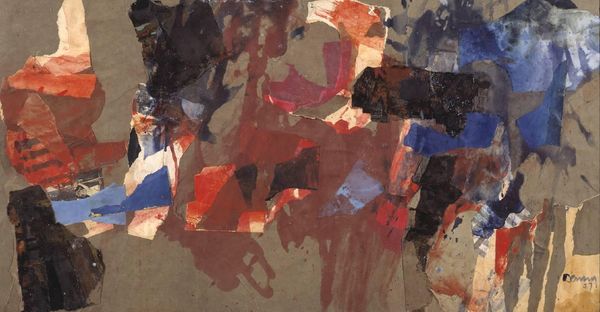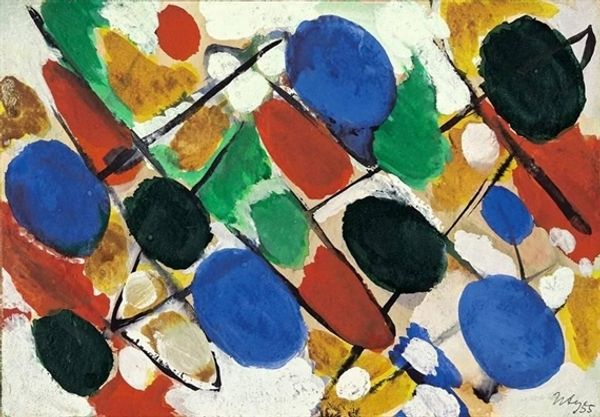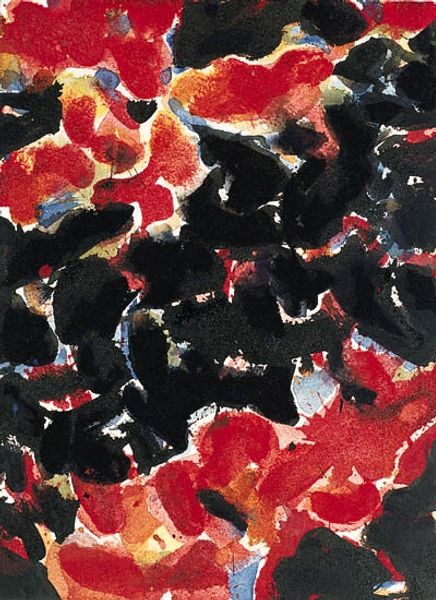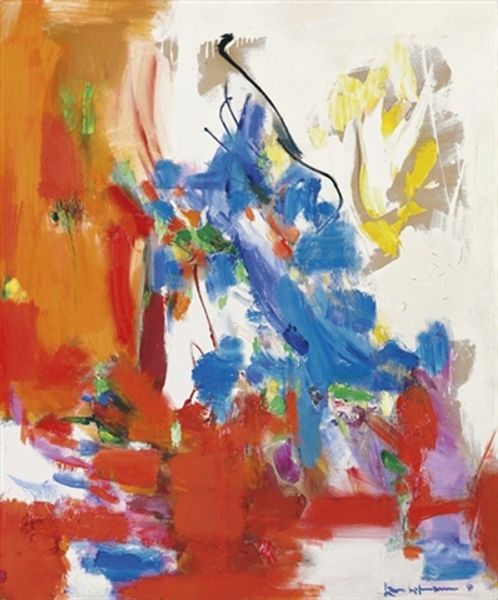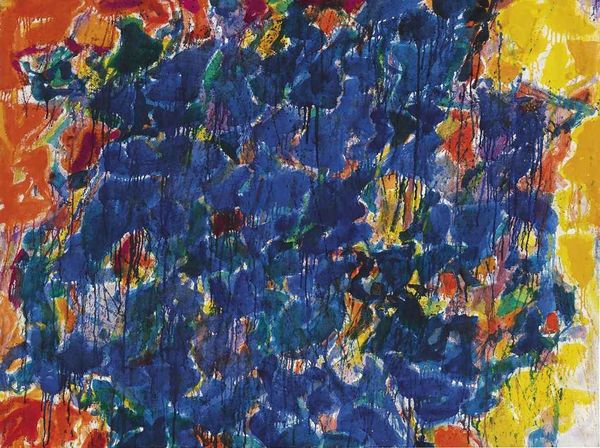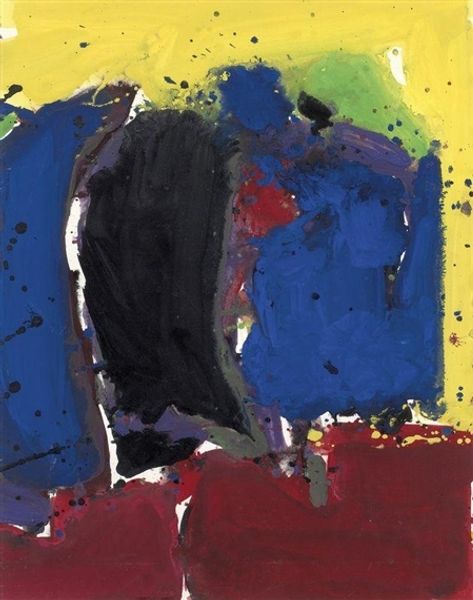
matter-painting, oil-paint
#
abstract-expressionism
#
abstract expressionism
#
organic
#
abstract painting
#
matter-painting
#
oil-paint
#
organic pattern
#
abstraction
Copyright: Ernst Wilhelm Nay,Fair Use
Curator: Before us is "Blue Flood," a matter painting rendered in oil by Ernst Wilhelm Nay in 1960. It's currently held here at the Museum Ludwig. Editor: My immediate sense is one of energetic chaos. The forms seem almost buoyant, as though a cluster of spectral balloons were set adrift. There's an appealing rawness to the texture, too. Curator: The composition certainly generates visual dynamism, with each chromatically distinct disc occupying its own discrete plane of space, and, significantly, working to define that space by occupying it. Look closely, though, and note how the chromatic relationships bind the ostensibly separate elements into something very close to unity. Editor: The 'matter painting' aspect intrigues me most, actually. What specific oil application methods was Nay utilizing to conjure this layered visual language? Was he primarily building upon layers already dried, or intermixing wet paints in the moment? I'm curious as to Nay's intentions regarding mass and depth. The tactile dimension pulls me in far more than whatever "unity" you alluded to, frankly. Curator: Ah, but that materiality reinforces the formal devices; the texture compels the eye, leading to a more nuanced reception of its abstract structural features and how they engage with mid-century anxieties about subjectivity. Editor: I would guess, considering the social and political milieu of Germany in 1960, that the emphasis should remain with how Nay worked to subvert notions of postwar re-growth by literally getting his hands dirty—making his own material reality by confronting the expectations of an idyllic landscape. The painting's physicality, achieved by a unique manipulation of the "organic pattern" itself, should also be understood. Curator: Very insightful! In effect, he established tension between surface and symbol. And on the symbol's surface—the organic blobs and spheres—one can detect the structural underpinnings of existential discourse! Editor: Whether his structural composition deliberately worked as a conduit for social discourse, or purely intuitive impulse is hard to pinpoint. In any case, "Blue Flood" feels very much alive through his deliberate layering. Curator: Yes. A dialogue between method and motif creates this feeling of suspended motion, doesn't it? The dynamism generates something akin to epiphany, or, at least, the striving toward that elevated state. Editor: Well said. By physically grappling with oils, Nay confronted—rather than masked— the conditions of labor, in a society undergoing its own type of matter-painting—or, reconstructive materiality—if you will.
Comments
No comments
Be the first to comment and join the conversation on the ultimate creative platform.
